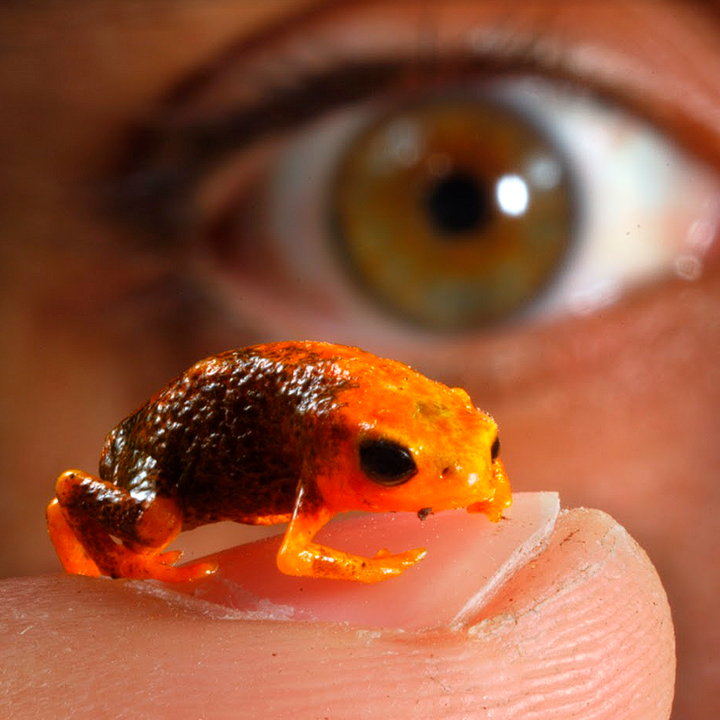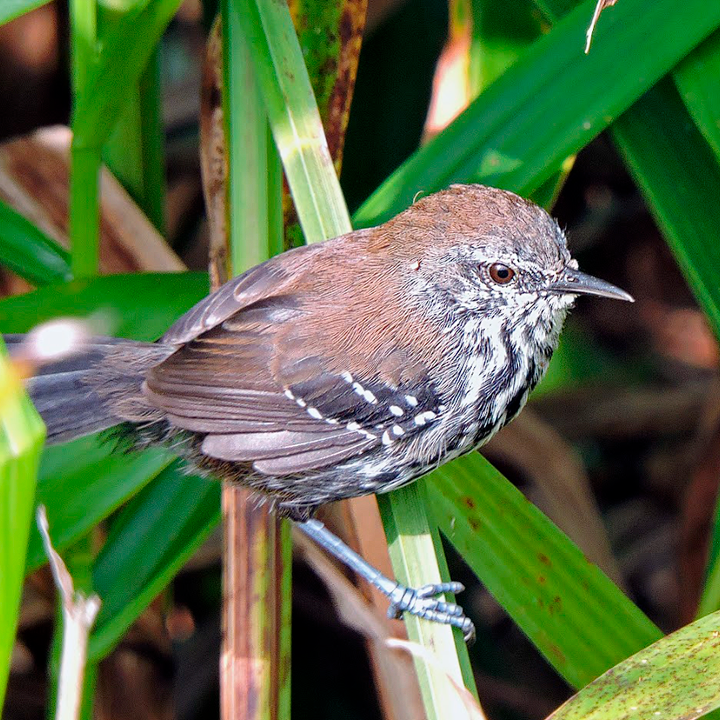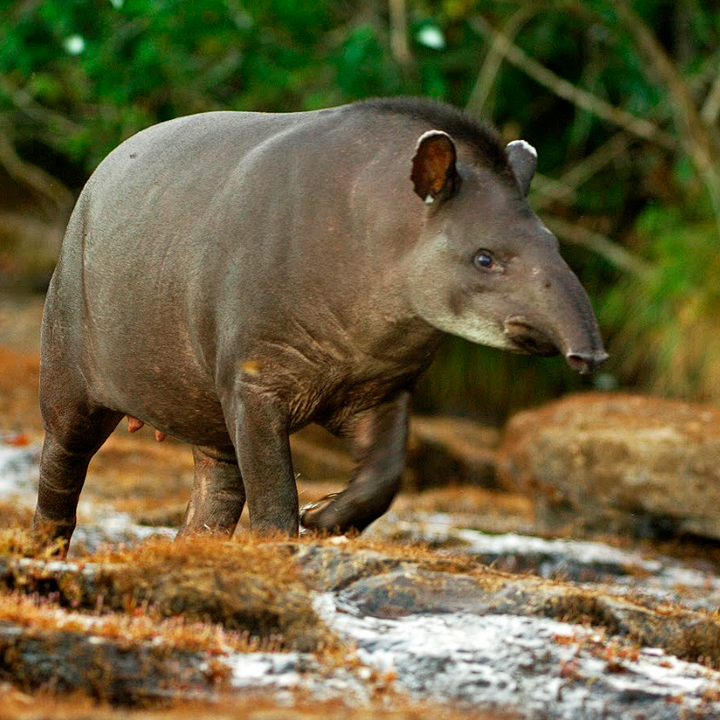With such varied and diverse ecosystems throughout the Atlantic Forest Great Reserve, we expect no less than to find many unique and endangered species of wildlife. The region is noted for its many species of frogs and toads, including the colorful, tiny, and recently famous Saddleback Toads of the genus Brachycephalus. This group of toads provides a wonderful example (for ecologists, at least) of the Theory of Island Biogeography, where each mountaintop is like an island, similar to the Galapagos Islands in that respect. Many other species of frogs have unique and interesting reproductive habits. For example, Hummboldt’s grass frog (Vitreorana uranoscopa) lays its eggs on broad leaves that overhang a source of water, such as a creek. When the eggs hatch, the young fall into the water to continue their development as tadpoles. In contrast, females of the frog Fritziana fissilis (which has no common name, also known as Flectonotus fissilis) carry the eggs around in little pouches on their back and when the tadpole emerges, the females drop them off in bromeliads that have water stored in them, where they continue their development.


Some well-known and fascinating reptiles can be found in the Atlantic Forest Great Reserve, including the jararaca (Bothrops jararaca, relative to the better-known Fer-de-lance) and the lizard called the Tegu (Tupinambis sp.), which can grow to be a very large. Some species are rarer, such as Cropan’s Tree Boa (Corallus cropanii), which is endemic in the region and in danger of extinction.
Like neotropical forests everywhere that are known for their many species of birds, The Atlantic Forest Great Reserve has an impressive array of species. The Green-headed Tanager (known locally as the seven-colored tanager, Tangara seledon) and toucans (Ramphastos ssp.) and the Spot-billed Toucanet (Selenidera maculirostris, another Atlantic Forest endemic) are beautiful and enjoyable to watch. And, the entire population of the the Red-tailed Parrot (Amazona brasiliensis) is found only here. Also found is the related and endangered Vinaceous-breasted Parrot (Amazona vinacea). Many species of birds-of-prey are also found here, including three species of hawk-eagle (Spizaetus ssp.), and the rare Rufus Crab Hawk (Buteogallus aequinoctialis) that can be found in the mangroves. Unfortunately, some species are no longer found here, including the grand Harpy Eagle (Harpia harpyja). In the lowland, coastal regions we can find the Scarlet Ibis (Eudocimus ruber), which can be seen with the Neotropical Cormorant (Phalacrocorax brasilianus), boobies (Sula ssp.) and the Magnificent Frigatebird (Fregata magnificens). We remember the Paraná Antwren (Formicivora acutirostris), endangered and endemic to the coastal marshes.


The Atlantic Forest Great Reserve has some amazing mammals as well. The Southern Muriqui (Brachyteles arachnoides) and two species of Lion Tamarins – a small population of the Black Lion Tamarin (Leontopithecus chrysopygus) and the entire natural population of the Black-faced Lion Tamarins (Leontopithecus caissara).
The big mammals, unfortunately often hunted, include the South American Tapir (Tapirus terrestris), the White-lipped (Tayassu pecari) and Collared (Pecari tajacu) Peccaries, the Paca (a large rodent, Agouti paca), and the Capybara (an even larger rodent, Hydrochoerus hydrochaeris).


Of course, where there are big mammals, there are natural predators to hunt them, including the Bush Dog (Speothos venaticus), the Ocelot (Leopardus pardalis), the Mountain Lion or Puma (Puma concolor), and the largest predator in all South America, the Jaguar (Panthera onca).
Off shore, in the ocean, there are also large and beautiful animals, including the Manta Ray (Manta birostris) and large Groupers (Epinephelus itajara), that can weigh in at over 400 kg (880 lbs), found among the rocky reefs around the oceanic islands. The estuaries, bays and ocean provide foraging for Green Sea Turtles (Chelonia mydas), that may also nest on shore. Here, we commonly see the Guianan Dolphin (Sotalia guianensis) and in Babitonga Bay, in the state of Santa Catarina, is the only place to see the rare La Plata Dolphin (Pontoporia blainvillei) in Brazil.

Photos by Zig Koch, Reginaldo Ferreira, Mariana Landis & Projeto Toninhas





































